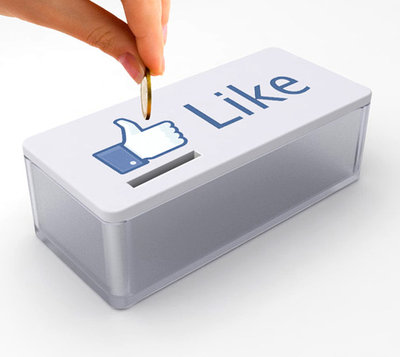Spreading the Gospel of Your Brand through Brand Advocates
If you ever watched an Afterschool Special when you were a kid, you were no doubt brainwashed into believing that allowing your friends to talk you into anything could only lead to disaster. Every installment of this television staple was basically a sermon about how following the crowd would surely end with you living on skid row or being extracted from a car by the Jaws of Life. And all because you didn’t obey your mother’s warning against the evils of outside influences. But, despite what you’ve heard, all peer pressure isn’t bad — especially if you’ve got a product to sell. In fact, the first chapter in the marketers’ bible covers the importance of tapping into consumers’ lemming-like mentality.
Long before the term “viral” was ever coined to express something taking on a life of it’s own online, products and services have survived and thrived based on good old-fashioned word of mouth. Take for instance the Faberge Organics shampoo commercials from the ’80s http://www.youtube.com/watch?v=TgDxWNV4wWY. You may not remember the brand, but there’s no way you’ve forgotten the copy, which goes: “I told two friends, and they told two friends and so on and so on.” The spot perfectly depicts the social nature of the human animal.
Power in Numbers
And because you’re only human, I’m sure you’ve done your fair share of product proselytizing in your time. For me, I can’t resist spreading the good news regarding cupcakes, lipstick colors and shoes with my friends — and I know a few of them regularly flock to my recommendations. At this point I feel I should be receiving a commission on these sales. The truth is, though I’m not a salaried employee, I do have a title: Brand Ambassador. As the trusted link between the must-have product and potential consumers, I’m an important member of the team. According to Socialnomics, a blog that tracks word of mouth on the web, 90 percent of consumers trust peer recommendations while only 14 percent trust advertisements.
Like an answered prayer, today’s online communities make it easier and faster for advocates like me to work miracles on the bottom line — but only for those companies that know how to harness the power. While you may have a legion of faithful fans out there sharing the gospel of your saintly products two friends at a time, they’d be even more effective if they were doing so on the all mighty Internet. Just imagine the hundreds — or even thousands — of their friends and followers who might drink your brand’s Kool-Aid after reading one status update proclaiming your product to be the Holy Grail.
For its part, Facebook recognizes that for marketers, the power of social media is having friends’ names associated with a brand, according to Matt Jacobson, head of market development at Facebook. It’s the reason why the leading social network unleashed its “Like” button for use all over the web. Through this widget, members of the Facebook community can underscore their zeal for products, services and ideas with one click that in turn alerts their online friends to their endorsement.
Of course, the ‘Like’ button isn’t new; it’s really just a digital revival of the old over-the-backyard-fence conversations neighbors have been having forever. But now your neighbor is everyone you know or care to “follow.” So it only stands to reason that if your company doesn’t have one of those helpful little thumbs-up icons on every product page of your site, it’s time you get a revelation. After Gilt Groupe introduced “Like” onto its flash sale pages a year ago, the site saw a 50 percent leap in sales coming from Facebook after the first week.
Choosing to Commit
Gilt’s testimonial illustrates a simple fact, according to Ben Silberman, co-founder and CEO of Pinterest: “The people you care about will have the biggest influence over you.” And that doesn’t just have to be loved ones. It also extends to people with similar tastes and interests. This fact has been the genesis for a whole genre of sites that boast cultish followings. Sites like Pinterest and Polyvore allow users to create mood boards of the things that inspire them most. From there, viewers can comment or click to buy the coveted items. While our love of sharing our finds keeps these sites populated, it’s our desire to snap up the most sought-after items that keeps them popular.
So, how best to tap into all of this potential? Short of divine intervention, it’s not enough to simply hope online tribes will emerge to champion your brand. You must add your voice to the choir. Now I can already hear the plaintiff wail from those of you who aren’t active online and already feel overwhelmed by your design, production, sourcing, sales and PR responsibilities regarding the time it would take to stir up the faithful on Facebook, Twitter, YouTube and their ilk, but as Socialnomics says, “the ROI of social networking is your business will still exist in five years.”
In other words, if you want your brand to have everlasting life, you don’t have a choice of whether or not to spend time in online communities. Because even if you’re not interacting with your target customer in a chat room or on Twitter, you can bet your competition is. It’s this involvement that wins converts.
Once you amass your brand ambassadors, don’t forget, they don’t want to be preached at, they want to feel like a part of the team. For online store ModCloth, hosting “Be the Buyer” chats on Twitter, in which shoppers can vote on the goods they’d like to see in the shop, isn’t a lazy way to get buying help. CMO Kerry Cooper says the site’s real goal is to create “engagement” with its shoppers. Jess Lee, co-founder of Polyvore, agrees that engaging fans is key. “Brands need to remember that social media is a two-way conversation,” she says. “They need to show some love to fans and followers online and figure out a way to involve and reward brand advocates.”












